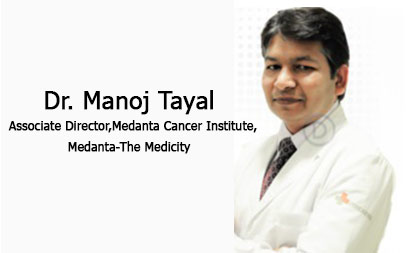Bone Marrow Transplantation (BMT)
Bone marrow transplantation (BMT) or peripheral blood stem cell transplantation is one of the essential treatment modalities used in blood cancers along with chemotherapy. Rarely bone marrow transplant can be done for patients with solid

Bone marrow transplantation (BMT) or peripheral blood stem cell transplantation is one of the essential treatment modalities used in blood cancers along with chemotherapy. Rarely bone marrow transplant can be done for patients with solid cancers as elaborated below. BMT replaces stem cells destroyed during the high doses of chemotherapy during the cancer treatment. The healthy, transplanted stem cells can restore the bone marrow’s ability to produce the blood cells. The graft-versus-tumor (GVT) effect that occurs after allogeneic BMT is crucial to the effectiveness of the treatment.GVT occurs when white blood cells from the donor (the graft) identify the cancer cells that remain in the patient’s body after the chemotherapy and/or radiation therapy (the tumor) as foreign and attack them.
Hematopoietic stem cell transplant (HSCT):
Initially bone marrow was extracted from the donor, filtered, and infused intravenously into the recipient. Nowadays, peripheral blood stem cells, instead of bone marrow, were collected from the donor as an alternative to
bone marrow grafting. (“BMT” at present is more appropriately termed “HSCT”)
Diseases most commonly treated malignancies with HSCT
– Multiple myeloma,
– Lymphomas (Non-Hodgkin and Hodgkin’s)
– Acute/chronic myelogenous leukemia,
– Acute lymphoid leukemia,
– Myelodysplastic syndrome,
– Additional malignant and nonmalignant diseases.
• Solid cancers include breast cancer, germ cell tumors, renal cell carcinoma, melanoma, neuroblastoma, and other pediatric cancers.
• Non-cancerous conditions include sickle cell disease, rare immunologic conditions in children etc
HSCT can be called Autologous or allogeneic
• Autologous: when the patient’s own cells (native stem cells) are re-infused;
• Allogeneic: hematopoietic stem cells are harvested from someone other than the recipient.
– from related or unrelated individuals,
– “matching” of donor and recipient is performed.
– The graft may be in the form of
• bone marrow,
• peripheral stem cells, and
• umbilical cord blood
BMT/HSCT Preconditioning:
For blood or marrow stem cell transplants, chemotherapy, monoclonal antibody therapy, and or radiation to the entire body (total body irradiation- TBI) is given at higher doses than standard therapy. This destroys diseased cells and also normal cells, and helps make room in the patient’s bone marrow for new blood stem cells to grow which allows transplanted stem cells to develop new healthy blood cells.
TBI may be particularly important in the setting of matched-unrelated donor transplants, when adequate mmunosuppression is essential and it also is beneficial to destroy cancer cells in sanctuary sites (brain, testes etc) where chemotherapy is unable to reach.
Side effects of BMT / HSCT:
Short-term side effects such as nausea, vomiting, diarrhea, fatigue, loss of appetite, mouth sores, hair loss, and skin reactions are common The major risk is an increased risk of infection and bleeding which requires antibiotics and blood product transfusion. The patient needs to be in isolation for 14-21 days, till the donor marrow takes-up the recipient’s marrow and can work as a normal bonemarrow without disease. Potential long-term risks include complications of the pre-transplant chemotherapy and radiation therapy, such as infertility;cataracts; secondary (new) cancers; and damage to the liver, kidneys, lungs, and/or heart. With allogeneic transplants, GVHD (grast versus host disease) sometimes develops which can affect the skin, liver, and intestines. This complication can develop within a few weeks of the transplant (acute GVHD) or much later (chronic GVHD). To prevent GVHD the patient may receive immunosuppressive medications (medications that suppress the immune system) or additionally require a process called “T-cell depletion”.
Conclusion
Over the last three decades, advances in treatment and supportive care have translated into steady improvements
in survival after bone marrow transplantation (BMT) given for patients with leukemia and other malignant and
nonmalignant diseases. With the easy availability of BMT facility in India, 50-70% of transplant recipients are
getting cured and surviving long-term.
Act fast, Act right
Early detection of brain tumors is very important especially because most of them are treatable and may be life
threatening if left alone. The right treatment under the best facilities is the key so that maximum tumor resection
combined with utmost safety may lead to the improved patient outcomes. Not all tumors may need surgery too.
Sometimes all the tumor would need is proper medication to treat it. And to operate it would put the life of the patient at risk.
Thus, brain tumor is not something that needs to be feared. Many of them can be removed safely and the patient
can lead a normal life back. Even in cases of brain tumors that are malignant, an advanced treatment can help give
patients a life with better quality.





